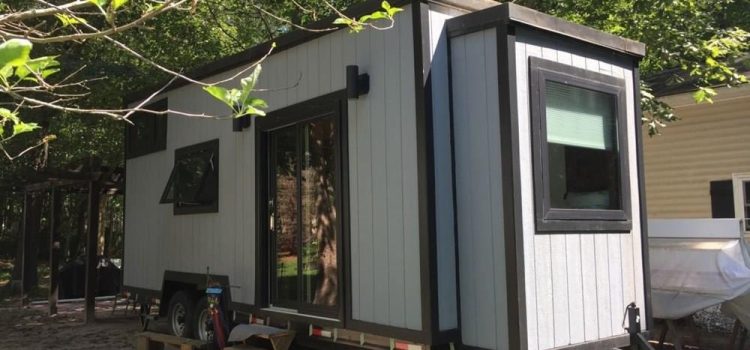
More Than Meets the Eye: Tiny Homes’ Role in Real Estate Trends
Introduction:
Greetings, I’m David Simon, a seasoned real estate expert with over two decades of experience navigating the ever-evolving housing market. In this captivating exploration, we’ll delve into the fascinating world of tiny homes and their remarkable influence on real estate trends. Join me as we uncover the hidden facets of compact living, sustainability, and how these diminutive dwellings are quietly reshaping buyer preferences, affordability, and the very future of housing.
The Tiny Home Revolution
In recent years, the Tiny House Movement has morphed from an unconventional lifestyle choice into a powerful force in the real estate market. Let’s unravel the reasons behind its ascent and why it holds such allure for individuals seeking a simpler, more sustainable way of life:
Embracing Minimalism
In a world characterized by excess and consumerism, the Tiny House Movement provides a refreshing antidote in the form of minimalism. It encourages individuals to declutter their lives, prioritizing experiences and quality over quantity. By downsizing, homeowners can reduce their environmental footprint and gain newfound financial freedom.
Affordability and Financial Freedom
One of the most compelling aspects of tiny homes is their affordability. With significantly lower costs compared to traditional homes, they offer a path to homeownership for a broader demographic. This financial liberation empowers individuals to allocate resources toward enriching experiences and meaningful pursuits.
Sustainable Living at Its Core
Tiny homes inherently champion sustainability. Their reduced size leads to lower energy consumption, decreased waste production, and often the use of eco-friendly materials. This aligns harmoniously with the global commitment to sustainable living and environmental responsibility.
Mobility and Freedom
Many tiny homes are designed to be mobile, granting residents the freedom to travel or relocate without the constraints of traditional homeownership. This mobility is a dream come true for adventurous souls or those seeking a change of scenery without the burden of selling property.

Key Benefits of Tiny Home Living
Tiny homes offer a multitude of benefits for those who embrace this lifestyle:
Table: Key Benefits of Tiny Home Living
| Benefit | Description |
|---|---|
| Affordability | Lower cost of ownership and reduced expenses |
| Minimalism | Simplified, clutter-free living |
| Sustainability | Reduced environmental impact |
| Mobility | Freedom to travel and explore |
| Community | Strong, like-minded communities |
Shaping the Real Estate Landscape
The influence of the Tiny House Movement extends beyond individual homeowners. It has catalyzed significant changes in the real estate industry:
Reevaluating Homebuyer Priorities
As the movement gains traction, homebuyers are reevaluating their priorities. Square footage is no longer the sole focus; sustainability, mobility, and community living have taken center stage in the homebuying process.
Niche Markets and Investments
Real estate developers and investors have seized the opportunity presented by the growing demand for tiny homes. Communities dedicated to tiny living are emerging, offering a unique investment opportunity. These developments cater to a niche market that values simplicity and sustainability.
Overcoming Regulatory Challenges
The acceptance of tiny homes has faced challenges from zoning laws and building codes that often need adaptation to accommodate these innovative homes. Advocacy and policy changes are pivotal to further promote the movement and adapt to the evolving real estate landscape.
Expert Insights: Sarah Mitchell, Advocate for Sustainable Living
To gain deeper insights into the Tiny House Movement and its environmental implications, I had the privilege of speaking with Sarah Mitchell, a distinguished advocate for sustainable living. Armed with a master’s degree in environmental science and a TED Talk on sustainable living boasting over 2 million views, Sarah is a respected authority in this field.
Sarah emphasized the importance of conscious consumer choices and the role tiny homes play in reducing our carbon footprint. She stated, “Tiny homes serve as a tangible example of how we can live more sustainably, with less impact on our planet. They inspire us to question our consumer habits and strive for a greener future.”
Conclusion:
In a world where “more” has often been synonymous with “better,” the Tiny House Movement challenges this notion. It urges us to rethink our priorities and embrace a simpler, more sustainable way of life. As we’ve explored the rise of tiny homes and their influence on real estate trends, it’s clear that this movement is not merely a trend—it’s a quiet revolution that’s reshaping the future of housing.
Whether you’re considering downsizing or merely intrigued by this minimalist lifestyle, the Tiny House Movement has undeniably left an indelible mark on our society. Embracing the tiny home philosophy may just be the key to unlocking a more fulfilling, sustainable, and community-oriented future in the world of real estate.










